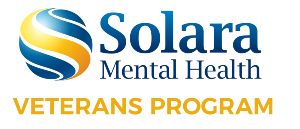Recognizing the symptoms and causes of a panic attack vs anxiety attack is a crucial step to releasing yourself from the grip of the attack.
One difference is that panic attacks may begin suddenly, while anxiety attacks escalate more gradually. Still, every person experiences panic and anxiety in different ways.
Once you can better differentiate between the two experiences, it might also be beneficial to share this information with a loved one. Then, they can better support you when you’re having a panic attack or anxiety attack.
Learning more about how your body responds to stress and trauma means you can begin to develop a deeper relationship with yourself. If you want to more fully understand your body, your mind, and your triggers, keep reading.
What’s a Panic Attack
When your autonomic nervous system takes charge of your body, it’s perceiving a threat to your person and reacting in the only ways it knows how.
This can also be referred to as your fight or flight response (which also includes the freeze and fawn responses).
Your body is bracing for impact, even if that potential danger is a conversation or a fear of elevators, and not a predator or hurricane. That being said, this stress is still genuine, even if the potential trigger doesn’t seem like it should be a “big deal.”
Panic attacks can arrive quickly. Sometimes there are no warning signs, and the physical symptoms can feel overwhelming.
In addition, panic attacks are typically more short-lived and subside in around 10 minutes. This may not be the case for all panic attacks, but it is a general estimation.
What’s an Anxiety Attack
Anxiety attacks can more frequently or easily be connected to a specific trigger.
For example, if you’re anticipating stress about a business meeting, that pre-event stress can cause an anxiety attack.
The level of overwhelm can vary for anxiety attacks. But the symptoms are more likely to linger in your body for minutes or hours after recovering from the attack.
These symptoms may grow and subside multiple times throughout the experience, as well.
Frequent anxiety attacks can be a result of other mental health conditions or phobias. Obsessive-compulsive disorder (OCD), claustrophobia, and other memories of trauma can cause extreme anxiety.
All the Symptoms
The symptoms of panic attacks and anxiety attacks are similar. So, it’s understandable why it can sometimes be difficult to differentiate between the two.
But there are a few symptoms that might be able to help you identify which experience you’re having, and potentially why it might be happening.
Panic Attack Symptoms
Some panic attack symptoms include chest pain, nausea, sweating, and dizziness.
While an anxiety attack could exhibit similar symptoms, a panic attack can also include feeling a loss of control. This feeling can be accompanied by a fear that you will die, or mentally dissociating from yourself or your surroundings.
Anxiety Attack Symptoms
Symptoms of an anxiety attack might also involve irritability, numbness in your arms or legs, and shortness of breath.
Anxiety attacks are currently included in the DSM-5, or the Diagnostic and Statistical Manual of Mental Disorders. But, some other symptoms attributed to anxiety attacks are extreme worry and distress, and restlessness.
Possible Triggers
What causes panic attacks and anxiety attacks could be any singular event or a combination of stressors.
An upcoming work project or social gathering could trigger an anxiety attack. Recalling past trauma or being in a toxic relationship could cause a panic attack. Or, the resulting reaction could be vice versa.
What You Can Do
While you can’t necessarily control when or how a panic attack or anxiety attack occurs, there are some things you can do to reduce your stress.
Over time, you can learn to recognize and accept your emotional and physiological responses.
At Home
There are some holistic relaxation practices you can incorporate into your routines and reactions at home to help with anxiety and panic. Some of these include breathing patterns and other mindfulness efforts.
Learning to relax and destress isn’t something that happens in a day or two. It is a regular practice of returning to the present moment.
You have to learn to recognize that your body’s response to danger isn’t founded in any physical threat to your well-being.
In other words, your stress is still real and valid. But the threat your mind perceives will not actually physically harm you in that moment of overwhelming stress.
Practices like meditation, yoga, and journaling can also help bring your body back to reality and reset your mind’s perspective.
Lifestyle Changes
While practicing yoga and coloring are effective methods to relax, they can only help so much.
If showing up at your job every day is a constant source of stress, or your three cups of coffee are more for comfort than for increasing productivity, you might need to make some serious lifestyle changes.
Huge stressors like your job, your relationship, and your eating habits can be significant triggers for panic attacks or anxiety attacks. Altering your lifestyle is imperative to reduce your body’s overwhelming responses to stress.
Try to slowly cut back on your consumption of caffeine, alcohol, and drugs. Incorporate physical movement into each day. If you want to connect with others who are experiencing similar struggles, join a support group.
Panic Attack vs Anxiety Attack
It may be confusing to determine the differences between a panic attack vs anxiety attack. Ultimately, your main job is to take care of yourself and recognize how your body is responding to extreme stress.
If you resonated with this information, make sure you have all the information you need before you make any significant life decisions. If you’d like to seek out more in-depth personal care, check out our programs here.

